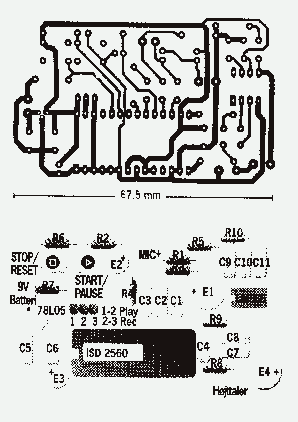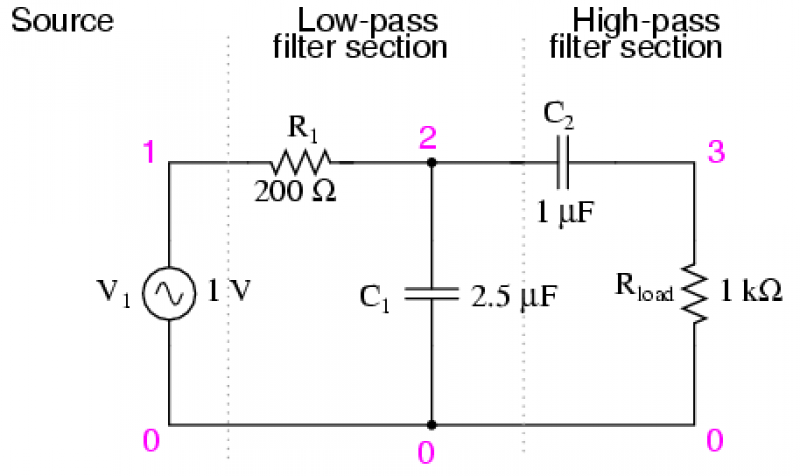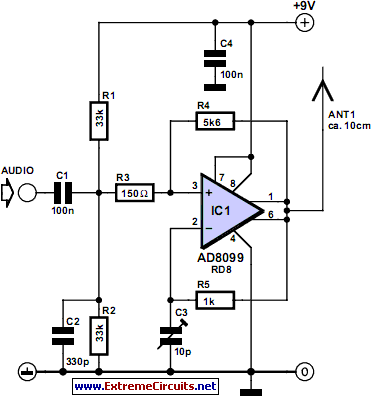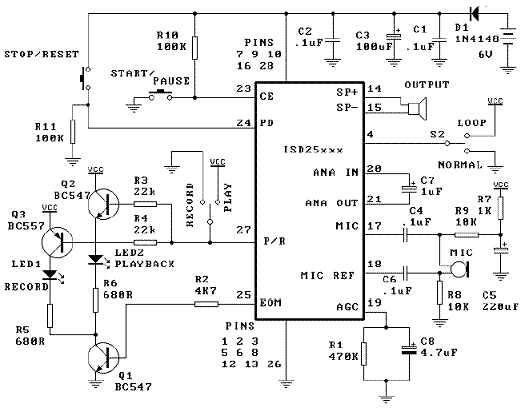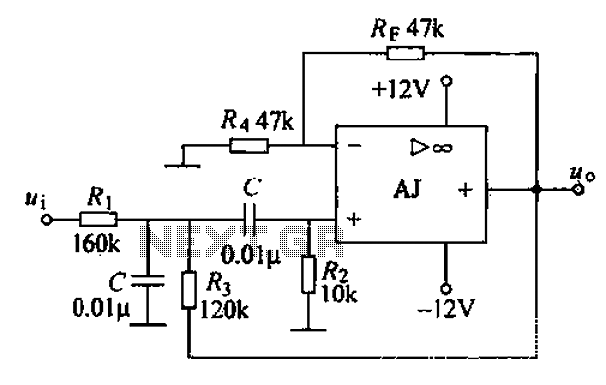
2nd order opamp filters
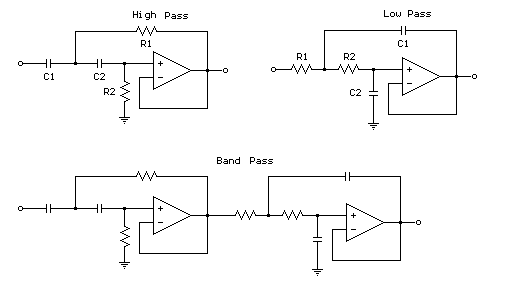
Three second-order filters are illustrated: low pass, high pass, and bandpass. Each filter will attenuate frequencies outside their passband at a rate of 12 dB per octave, which corresponds to a reduction of one-quarter of the voltage amplitude for each octave of frequency increase or decrease beyond the passband.
The schematic includes three distinct filter configurations, each designed to serve a specific function in signal processing.
1. **Low Pass Filter (LPF)**: This filter allows frequencies below a certain cutoff frequency to pass through while attenuating frequencies above that threshold. The second-order nature of this filter implies that it employs two reactive components, typically capacitors and inductors, which contribute to a steeper roll-off rate of 12 dB per octave. This characteristic is crucial in applications where high-frequency noise needs to be eliminated from signals, such as in audio processing or power supply circuits.
2. **High Pass Filter (HPF)**: In contrast, the high pass filter permits frequencies above its cutoff frequency to pass while suppressing lower frequencies. Similar to the low pass filter, the second-order design ensures a 12 dB per octave attenuation rate, making it effective for applications requiring the removal of low-frequency interference, such as in radio frequency circuits or audio crossover networks.
3. **Bandpass Filter (BPF)**: The bandpass filter combines the characteristics of both low pass and high pass filters. It allows a specific range of frequencies (the passband) to pass through while attenuating frequencies outside this range. The second-order design provides a sharper transition between the passband and the stopband, achieving a 12 dB per octave attenuation on either side of the passband. Bandpass filters are extensively used in communication systems, where it is essential to isolate specific frequency signals from a broader spectrum.
The implementation of these filters can be realized using various components, including operational amplifiers, resistors, capacitors, and inductors, depending on the desired application and performance specifications. The design considerations for each filter type involve selecting appropriate component values to achieve the desired cutoff frequencies and ensuring stability and minimal distortion in the passing signals.Three 2nd order filters are shown, low pass, high pass, and bandpass. Each of these filters will attenuate frequencies outside their passband at a rate of 12dB per octave or 1/4 the voltage amplitude for each octave of frequency increase or decrease outside the passband.. 🔗 External reference
The schematic includes three distinct filter configurations, each designed to serve a specific function in signal processing.
1. **Low Pass Filter (LPF)**: This filter allows frequencies below a certain cutoff frequency to pass through while attenuating frequencies above that threshold. The second-order nature of this filter implies that it employs two reactive components, typically capacitors and inductors, which contribute to a steeper roll-off rate of 12 dB per octave. This characteristic is crucial in applications where high-frequency noise needs to be eliminated from signals, such as in audio processing or power supply circuits.
2. **High Pass Filter (HPF)**: In contrast, the high pass filter permits frequencies above its cutoff frequency to pass while suppressing lower frequencies. Similar to the low pass filter, the second-order design ensures a 12 dB per octave attenuation rate, making it effective for applications requiring the removal of low-frequency interference, such as in radio frequency circuits or audio crossover networks.
3. **Bandpass Filter (BPF)**: The bandpass filter combines the characteristics of both low pass and high pass filters. It allows a specific range of frequencies (the passband) to pass through while attenuating frequencies outside this range. The second-order design provides a sharper transition between the passband and the stopband, achieving a 12 dB per octave attenuation on either side of the passband. Bandpass filters are extensively used in communication systems, where it is essential to isolate specific frequency signals from a broader spectrum.
The implementation of these filters can be realized using various components, including operational amplifiers, resistors, capacitors, and inductors, depending on the desired application and performance specifications. The design considerations for each filter type involve selecting appropriate component values to achieve the desired cutoff frequencies and ensuring stability and minimal distortion in the passing signals.Three 2nd order filters are shown, low pass, high pass, and bandpass. Each of these filters will attenuate frequencies outside their passband at a rate of 12dB per octave or 1/4 the voltage amplitude for each octave of frequency increase or decrease outside the passband.. 🔗 External reference

